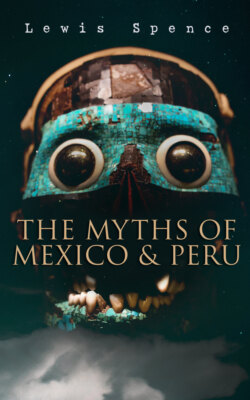Читать книгу The Myths of Mexico & Peru - Lewis Spence - Страница 32
На сайте Литреса книга снята с продажи.
Picture-Writing
ОглавлениеThe Aztecs, and indeed the entire Nahua race, employed a system of writing of the type scientifically described as “pictographic,” in which events, persons, and ideas were recorded by means of drawings and coloured sketches. These were executed on paper made from the agave plant, or were painted on the skins of animals. By these means not only history and the principles of the Nahua mythology were communicated from generation to generation, but the transactions of daily life, the accountings of merchants, and the purchase and ownership of land were placed on record. That a phonetic system was rapidly being approached is manifest from the method by which the Nahua scribes depicted the names of individuals or cities. These were represented by means of several objects, the names of which resembled that of the person for which they stood. The name of King Ixcoatl, for example, is represented by the drawing of a serpent (coatl) pierced by flint knives (iztli), and that of Motequauhzoma (Montezuma) by a mouse-trap (montli), an eagle (quauhtli), a lancet (zo), and a hand (maitl). The phonetic values employed by the scribes varied exceedingly, so that at times an entire syllable would be expressed by the painting of an object the name of which commenced with it. At other times only a letter would be represented by the same drawing. But the general intention of the scribes was undoubtedly more ideographic than phonetic; that is, they desired to convey their thoughts more by sketch than by sound.
